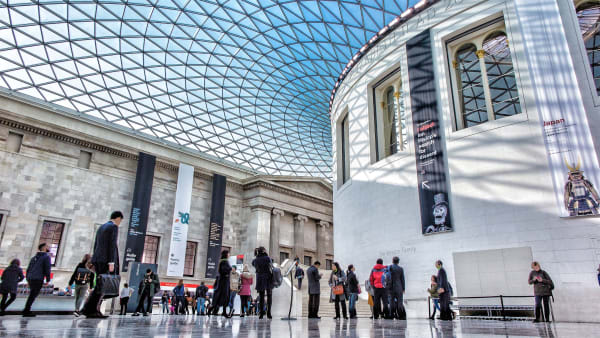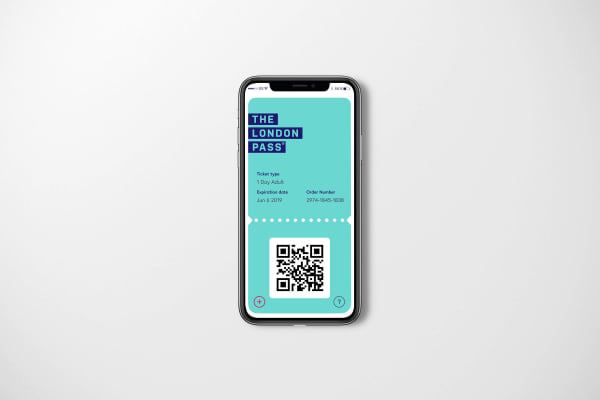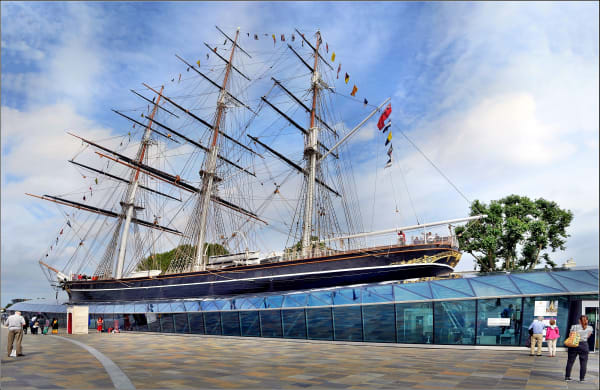Weather in London
Find out what the weather is like in London in every season and discover the best activities for your visit.
Weather in London
Find out what the weather is like in London in every season and discover the best activities for your visit.
Even though you might have heard about London weather being miserable, it’s probably not as bad as you expect it to be. At least not in the way you assume it’s going to be. First off, the rain. Yes, the UK is a rainy country and London is no exception. However, the city tends to be drier than other regions and the showers are usually not aggressive. Imagine more of a persistent, thin drizzle than thundering rainfall.
More than rain, London experiences plenty of cloudy days and humidity, with sudden changes in weather throughout the day, especially in the spring and autumn. That said, temperatures are generally mild year-round.

Consider bringing some travel essentials when visiting London: a rain jacket, sensible, water-resistant shoes, and an umbrella. If you wear glasses, always carry a cleaning cloth with you, you’ll need to use it often. Know that if you don’t bring these with you on your trip, you’ll have to buy them once you’re here.
In the following sections, you can see the average temperatures and climate for each season.
Spring
While this isn’t necessarily the rainiest season, the weather tends to change rather quickly in spring, so you can expect to get a taste of every season in a matter of a few hours. That goes to say, just because the weather looks sunny and warm in the morning, it doesn’t mean it will stay consistent for the rest of the day.
Overall, London springs are still quite chilly, especially in March and early April. Since temperatures increase steadily throughout the season, going from an average of 7° to an average of 13°, we recommend checking the specifics for your visit, but as a general rule, wearing layered clothing always helps with the revolving-seasons days.
A great thing about spring is that London is getting lively with more and more outdoor events, but tourists are still not swarming the city. The exception is of course the Easter Holiday period, especially on the days that go from Good Friday to Easter Monday. During those days, you might find heavier traffic and crowded spaces.
Summer
Obviously, summer is the warmest season in London. July and August are slightly hotter but the temperatures are overall quite homogenous throughout the season, with an average minimum of 14° and a maximum of 23°. In recent years it is becoming increasingly common to have a week of extreme heat - at least by British standards - in the summer, with temperatures reaching 30° or higher and high humidity.
The period that goes from June to July is normally the least rainy, but if you stay for a week, chances are you’ll catch at least one day of rain, so pack accordingly. Remember to also bring a jacket, especially if you are used to warmer weather.
A great thing about the summer in the UK is how late the sun goes down. Sunsets are long and slow, stretching from 9:30 pm to about 10:30 pm. With the warmth and long hours of daylight, the city is at its liveliest, so we recommend enjoying the parks, beer gardens, rooftop bars, and outdoor events like music festivals and open-air cinemas and theatres.
Since this is normally the most popular time for tourists to visit London, we recommend pre-booking your tickets and starting your days early in the morning to avoid the biggest crowds.
Autumn
Autumn is definitely the quietest season in London in terms of tourism flux, so if you have the liberty to choose, we recommend visiting at this time. The first half is particularly lovely, considering that temperatures tend to be warmer and the weather drier.
Moving towards the later months, temperatures decrease steadily (going from an average of 11°-19° to one of 4°-10°) and days get progressively shorter. Expect daily showers towards November.
As mentioned, the city is not too busy during this period, but you’ll get to enjoy the Halloween decorations right until the end of October, and straight after that, Christmas decorations usually go up. In our opinion, this is the best time to enjoy the Christmas ornaments without having to deal with all the chaos of late December.
Winter
Winters in London are not as cold as one might expect, with temperatures rarely going near or below freezing: the average is between 5° and 9°. However, you’ll have to keep in mind that this is normally the rainiest and windiest season, with showers expected for 1 out of 3 days on average, so dress warm and as waterproof as possible.
The sun sets quite early in this period, around 4:00 pm, so you won’t have many hours of daylight to enjoy. Nonetheless, you can expect lots of indoor events and lovely decorations, especially around the Christmas Holidays.
Keep in mind that the city tends to be busiest between mid-December and the first week of January, so we recommend going in the late winter if you enjoy a quieter time. If you are visiting London for Christmas, we recommend pre-booking your entries whenever possible to avoid long queues. You should also keep in mind that many attractions, venues, and museums are closed for Christmas Day and Boxing Day (25th-26th December).














